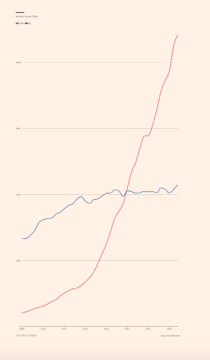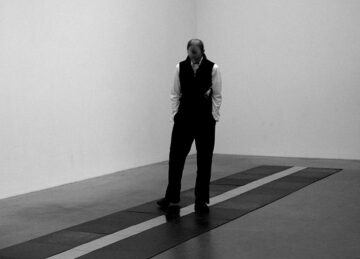From SWE and CMich:
 As we embark on Black History Month 2024, we proudly embrace the theme “African Americans and the Arts,” chosen by The Association for the Study of African-American Life and History (ASALH). This month, we celebrate the profound contributions of African American visionaries in the arts, highlighting the intersection of creativity and engineering/STEM. Join us in honoring the rich tapestry of talent that shaped not only history, but also the future of our diverse and dynamic community.
As we embark on Black History Month 2024, we proudly embrace the theme “African Americans and the Arts,” chosen by The Association for the Study of African-American Life and History (ASALH). This month, we celebrate the profound contributions of African American visionaries in the arts, highlighting the intersection of creativity and engineering/STEM. Join us in honoring the rich tapestry of talent that shaped not only history, but also the future of our diverse and dynamic community.
The theme for Black History Month 2024 focuses on “African Americans and the Arts”. This theme is infused with African, Caribbean, and Black American lived experiences. In the fields of visual and performing arts, literature, fashion, folklore, language, film, music, architecture, culinary and other forms of cultural expression the African-American influence has been paramount. African-American artists have used art to preserve history and community memory as well as for empowerment. Artistic and cultural movements such as the New Negro, Black Arts, Black Renaissance, hip-hop, and Afrofuturism, have been led by people of African descent and set the standard for popular trends around the world. In 2024, we examine the varied history and life of African-American arts and artisans.
…The suffering of those in bondage gave birth to the spirituals, the nation’s first contribution to music. Blues musicians such as Robert Johnson, McKinley ‘Muddy Waters’ Morganfield and Riley “BB” B. King created and nurtured a style of music that became the bedrock for gospel, soul, and other still popular (and evolving) forms of music. Black contributions to literature include works by poets like Phillis Wheatley, essays, autobiographies, and novels by writers such as David Walker and Maria Stewart. Black aesthetics have also manifested themselves through sculptors like Edmonia Lewis and painters like Henry O. Tanner.
More here.

 Last week, a
Last week, a Neuralink was founded in 2016 by
Neuralink was founded in 2016 by  As data from the IEA confirm, the scale of China’s green energy push in the last couple of years dwarfs the much ballyhooed green energy programs in the West – NextGenEU, IRA etc.
As data from the IEA confirm, the scale of China’s green energy push in the last couple of years dwarfs the much ballyhooed green energy programs in the West – NextGenEU, IRA etc. There was a brief period in the later part of the Covid-19 pandemic, between the moment when Glenn Youngkin swept into the Virginia governorship and the full political return of Donald Trump, when I became convinced that American liberalism was headed for a truly epochal defeat in 2024.
There was a brief period in the later part of the Covid-19 pandemic, between the moment when Glenn Youngkin swept into the Virginia governorship and the full political return of Donald Trump, when I became convinced that American liberalism was headed for a truly epochal defeat in 2024. M
M I
I Back in 2001, immunologist Pere Santamaria was exploring a new way to study diabetes. Working in mice, he and his collaborators developed a method that uses iron oxide nanoparticles to track the key immune cells involved in the disorder.
Back in 2001, immunologist Pere Santamaria was exploring a new way to study diabetes. Working in mice, he and his collaborators developed a method that uses iron oxide nanoparticles to track the key immune cells involved in the disorder. We hypothesize that fictional stories are highly successful in human cultures partly because they activate evolved cognitive mechanisms, for instance for finding mates (e.g., in romance fiction), exploring the world (e.g., in adventure and speculative fiction), or avoiding predators (e.g., in horror fiction). In this paper, we put forward a comprehensive framework to study fiction through this evolutionary lens.The primary goal of this framework is to carve fictional stories at their cognitive joints using an evolutionary framework. Reviewing a wide range of adaptive variations in human psychology–in personality and developmental psychology, behavioral ecology, and evolutionary biology, among other disciplines –, this framework also addresses the question of interindividual differences in preferences for different features in fictional stories. It generates a wide range of predictions about the patterns of combinations of such features, according to the patterns of variations in the mechanisms triggered by fictional stories. As a result of a highly collaborative effort, we present a comprehensive review of evolved cognitive mechanisms that fictional stories activate.To generate this review, we (1) listed more than 70 adaptive challenges humans faced in the course of their evolution, (2) identified the adaptive psychological mechanisms that evolved in response to such challenges, (3) specified four sources of adaptive variability for the sensitivity of each mechanism(i.e., personality traits, sex, age, and ecological conditions), and (4) linked these mechanisms to the story features that trigger them. This comprehensive framework lays the ground for a theory-driven research program for the study of fictional stories, their content, distribution, structure, and cultural evolution.
We hypothesize that fictional stories are highly successful in human cultures partly because they activate evolved cognitive mechanisms, for instance for finding mates (e.g., in romance fiction), exploring the world (e.g., in adventure and speculative fiction), or avoiding predators (e.g., in horror fiction). In this paper, we put forward a comprehensive framework to study fiction through this evolutionary lens.The primary goal of this framework is to carve fictional stories at their cognitive joints using an evolutionary framework. Reviewing a wide range of adaptive variations in human psychology–in personality and developmental psychology, behavioral ecology, and evolutionary biology, among other disciplines –, this framework also addresses the question of interindividual differences in preferences for different features in fictional stories. It generates a wide range of predictions about the patterns of combinations of such features, according to the patterns of variations in the mechanisms triggered by fictional stories. As a result of a highly collaborative effort, we present a comprehensive review of evolved cognitive mechanisms that fictional stories activate.To generate this review, we (1) listed more than 70 adaptive challenges humans faced in the course of their evolution, (2) identified the adaptive psychological mechanisms that evolved in response to such challenges, (3) specified four sources of adaptive variability for the sensitivity of each mechanism(i.e., personality traits, sex, age, and ecological conditions), and (4) linked these mechanisms to the story features that trigger them. This comprehensive framework lays the ground for a theory-driven research program for the study of fictional stories, their content, distribution, structure, and cultural evolution. Some of the largest and most notable prediction markets to date have been around elections. The only problem? Prediction markets simply aren’t very good at political predictions. Markets for major U.S. elections are some of the deepest prediction markets anywhere: billions of dollars bet, millions of daily trades, and huge amounts of press. In theory, the larger the market, the more accurate the predictions. But in the markets with the biggest spotlight, we see a lot of strange stuff. Predictions that don’t line up with common sense. Odds that seem to defy reality. Obviously noncredible market movements. To figure out why, we’ll have to explore the underlying mechanisms that make markets work, and why the typical user of political prediction markets may not behave in the ways we expect.
Some of the largest and most notable prediction markets to date have been around elections. The only problem? Prediction markets simply aren’t very good at political predictions. Markets for major U.S. elections are some of the deepest prediction markets anywhere: billions of dollars bet, millions of daily trades, and huge amounts of press. In theory, the larger the market, the more accurate the predictions. But in the markets with the biggest spotlight, we see a lot of strange stuff. Predictions that don’t line up with common sense. Odds that seem to defy reality. Obviously noncredible market movements. To figure out why, we’ll have to explore the underlying mechanisms that make markets work, and why the typical user of political prediction markets may not behave in the ways we expect. Coming upon an Andre as you turn a corner in a gallery can be a lovely surprise. But for all the smaller controversies it has generated, it has become almost impossible to look down at Andre’s bricks, to tread his floors of metal plates, or gaze at his constructions of cut ash and cedar timbers, without thinking of the death of the
Coming upon an Andre as you turn a corner in a gallery can be a lovely surprise. But for all the smaller controversies it has generated, it has become almost impossible to look down at Andre’s bricks, to tread his floors of metal plates, or gaze at his constructions of cut ash and cedar timbers, without thinking of the death of the  The biggest recent find in classical music was the discovery that in 1940, Sergei Rachmaninoff was privately recorded by the conductor Eugene Ormandy. Seated at Ormandy’s piano, he played through his new Symphonic Dances, which Ormandy would soon premiere with the Philadelphia Orchestra. Singularly, Rachmaninoff never permitted his public performances to be broadcast—so this surreptitious home recording is the best evidence we have of what Rachmaninoff’s legendary pianism sounded like outside the confines of recording studios sucked clean of the oxygen a body of listeners can activate.
The biggest recent find in classical music was the discovery that in 1940, Sergei Rachmaninoff was privately recorded by the conductor Eugene Ormandy. Seated at Ormandy’s piano, he played through his new Symphonic Dances, which Ormandy would soon premiere with the Philadelphia Orchestra. Singularly, Rachmaninoff never permitted his public performances to be broadcast—so this surreptitious home recording is the best evidence we have of what Rachmaninoff’s legendary pianism sounded like outside the confines of recording studios sucked clean of the oxygen a body of listeners can activate.